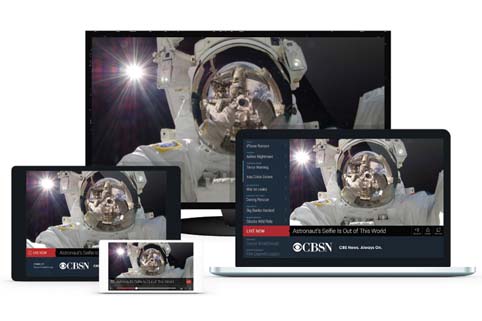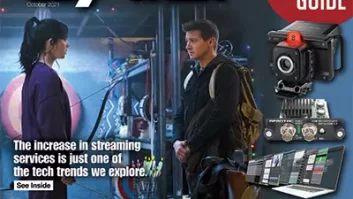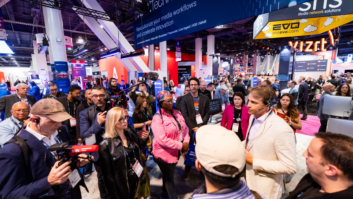
Worries about cord-cutting and rapid changes in the way people are viewing TV programming have roiled the TV industry in the last year, prompting the launch of a slew of video channels outside the traditional broadcast and pay-TV ecosystem.
In the last six months alone, HBO, CBS, Nickelodeon, Showtime, ESPN and others have either launched or announced that they were developing over-the-top (OTT) services that would be sold directly to consumers and a number of operators are eyeing the creation of smaller, less-expensive packages of channels that would be delivered over the Internet, with Dish already launching a $20 Sling TV offering.
“Things are moving very quickly,” said Michele Edelman, executive vice president of marketing and communications at Vubiquity and a panelist for today’s Super Session “Constant Cravings — Using OTT to Win the Next Generation of Viewers.” “It seems like there is a new announcement almost every day.”
That pace of change will also make OTT services, alternative delivery platforms and the ongoing debate over the impact of cord-cutting a major topic at the 2015 NAB Show, where a number of panels and many exhibitors will be addressing the topic.
A lot of the impact of these changes revolves around larger trends in the use of video and cord-cutting.
Here, the data both confirms and confounds widely held views. MoffettNathanson reports that total multichannel subs declined by just 0.1 percent in 2014 while Magna Global predicts that total U.S. subs will fall from 103.6 million in 2014 to 102.9 million in 2018, a level that is still higher than the 101.1 million U.S. homes who had a multichannel subscription in 2005.
But, as the housing market rebounds, Magna Global estimates the number of homes that primarily access video content over the Internet
will grow from 7.3 million in 2014 to 15.9 million in 2018. And, as more people embrace online video — Nielsen estimates that about 40.3 percent of all U.S. homes have an SVOD service like Netflix — programmers and operators are under increasing pressure to find new ways to reach younger audiences who are viewing less traditional TV.
Between the fourth quarter of 2011 and the fourth quarter of 2014, the amount of live and on-demand TV viewing fell by nearly five hours a week by those aged 25–34 and nearly seven hours of those aged 18–24, Nielsen data shows.
Much of this reflects the growing use of mobile devices, which aren’t included in traditional TV ratings. Ooyala’s Q4 Video Index Report found that smartphones and tablets accounted for 34 percent of all video plays, a five-fold spike since 2012.
Other researchers note that traditional TV programming remained hugely appealing among heavy online video users. Horowitz Research, for example, recently found that 75 percent of those who spend at least 20 percent of their TV viewing time watching online rated access to broadcast networks as a top advantage of having multichannel service, and that two-thirds (66 percent) say that broadcast primetime dramas and/or comedies are essential, notes the firm’s president Howard Horowitz.
“It is a challenge and an opportunity for traditional players to renew and reinvigorate the business,” Horowitz said. “The popularity of their content means that programmers and operators are well-positioned to capitalize on these trends.”
Thomas Morgan, CEO and founder of Net-2TV, agreed. He argues that the declines in traditional TV platforms reflect a fundamental shift in viewing that is encouraging programmers like HBO and CBS to go direct to consumers.
“It has caused considerable consternation,” he said. “But I really believe that the golden era of TV is in front of us, not behind,” given the opportunities that the new landscape opens up in the terms of more targeted advertising and content.
Eye on digital
“Our goal is to be cross-platform or multiplatform on every one of our core properties,” added Marc DeBevoise, executive vice president and general manager of Entertainment, Sports and News at CBS Interactive. He noted that the new CBS All Access subscription service and its 24-hour digital news channel CBSN help them tap into these trends in ways that can improve the viewer experience.
“We can provide full seasons of shows and improve the way we reach our audiences,” said DeBevoise, also a panelist for yesterday’s “Constant Cravings” Super Session.
The shift does, however, raise a host of tech issues that will be a major theme here at NAB Show. Just before the show, Imagine Communications issued a survey of media executives showing that 39 percent of respondents rated “improving multiplatform delivery” as a top tech priority in 2015, while 37 percent highlighted the importance of the migration of a hybrid or all-IP infrastructure, which would make it easier to launch new digital services.
“It is a great time to be a content owner, with all the new ways of distributing content, but that opens up enormous complexity and the need to be able to reduce all the manual effort and complexity,” said Rob Gardos, CEO of Mediamorph, which is on the exhibit floor with technologies to address that problem.
As the amount of OTT content proliferates, John Bishop, chief technology officer of Media at Akamai, said that broadcasters will need new technologies to manage these new businesses and will have to find ways to more closely integrate their broadcast and digital operations.
“In broadcast, scaling the audience does not scale the cost,” he said, which is very different from the online world, where increases in audiences and viewing will boost bandwidth cost.
By George Winslow, Broadcasting & Cable
All content courtesy of NAB Daily, under copyright: © 2015 NAB







